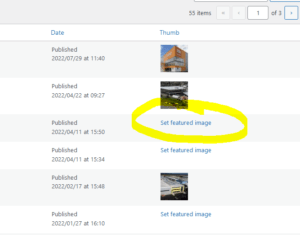By now, you’ve probably heard that Google is no longer supporting rel=prev/next markup. In fact, Google hasn’t supported it for years.
That’s unfortunate because Google forgot to tell anybody. Many digital strategists were implementing rel=prev/next code thinking that it would offer some SEO benefit.
It did at one time. It doesn’t anymore.
So what happened? And what should you do now?
In this article, I’ll go over Google’s recent announcement about the change. I’ll also explain what the elimination of rel=prev/next means for SEO.
How we got here
Way back in 2011, Google introduced the rel=prev/next markup. It was a way to inform Googlebot that the web page was part of a series.
For example, if you wrote several blog posts about all the SEO basics, you might include one article about keyword research, another article about on-site SEO, another article about backlinking, and so on.
In that case, you’d use the rel=prev/next markup to identify the next and previous articles in the series.
It wasn’t just a good idea for blog posts, though. E-commerce sites used the markup to identify products that all belonged to the same category.
Until recently, Google included documentation on its Webmasters Help page that explicitly told website owners to use the rel=prev/next markup. It read as follows:
Use rel=”next” and rel=”prev” links or headers to indicate the relationship between component URLs. This markup provides a strong hint to Google that you would like us to treat these pages as a logical sequence, thus consolidating their linking properties and usually sending searchers to the first page.
Now, that whole page is gone. Even worse: Google deleted it without telling anybody why.
Eventually, the Google Webmasters official Twitter account issued the following statement:
“Spring cleaning! As we evaluated our indexing signals, we decided to retire rel=prev/next. Studies show that users love single-page content, aim for that when possible, but multi-part is also fine for Google Search. Know and do what’s best for *your* users!”
Do you need to remove the code from your site?
No, you absolutely don’t need to remove the rel=prev/next markup from your site if you have it there.
Why? Because simply put, it doesn’t hurt to leave it there.
Also, Google isn’t the only search engine in town. And Bing’s Frédéric Dubut is on record saying that his search engine still uses rel=prev/next markup “for page discovery and site structure understanding.”
So the good news here is that you don’t need to go back and update all your old pages that have been using the markup since 2011.
Whew.
But should you? That is a different question which gets a little tricky. I’ve considered this previously and did a study on it.
What does this change mean for SEO?
Before I answer that question, let me make one thing clear: it looks like no SEO professional noticed that Google discontinued supporting the rel=prev/next markup from an indexing standpoint.
It wasn’t until someone saw that the Big G had pulled the documentation page that people started asking questions.
So maybe we should ask the philosophical question: “If Google removed a feature and nobody noticed, was it ever really there?”
But what it means is that Google will index the category page instead of the pagination going forward.
That’s not a problem, though. According to Google Web Performance Engineer Ilya Grigorik, Googlebot is intelligent enough to find your next/previous pages with a clear signal.
Remember: the bot is already evaluating all the links on your site. If you’ve structured your website so that it’s user-friendly and practiced great internal linking, Google will find your related content and rank it.
A few tips on category optimization
Now that rel=prev/next has gone away, what can you do to optimize your category pages? Here are a few pointers.
First, make sure you have most of your content on the first page in the category. That’s going to help with indexing. By content, I mean text, images and videos.
Not only that, but it will help with indexing for the right search terms. Once people get to your category page, they can find other pages.
Next, optimize your featured image on your main category page. Yes, I’m recommending you have a thumbnail that is optimized with a keyword in the file name and alt text. That gives Google additional info about the nature of your pages.
Also, optimized images will bring in traffic from Google Image Search.
After that, you should also add as many items to your category page as possible without slowing it down too much.
That one can be tricky in some instances. What if you have 10,000 items in a single category?
See if you can break them up into subcategories. Then, include one representative from each subcategory on the category page.
When considering e-commerce, lately I like to have about 30 to 60 products in a category. I also will not create a subcategory unless I have five unique products.
The million dollar question, do you get rid of rel next rel prev?
Well, since there is already a canonical in place, Google will just attribute all the value to the first page. So you have the option of.
- Keep it in place and have it work just like a rel canonical.
- Get rid of rel next rel prev and have it treated the same way, but don’t worry about legacy code.
- Put in place a no index on all the pages except the category. Some people like this because if you do the no index or a robots.txt block it can save some crawl budget, meaning Google will not crawl the pagination as much.
Personally, I like option 2.
Wrapping it up
I could give you 20 more tips about optimizing categories in this article. Things like adding dates to titles, testing numbers in various items in the template, where to add schema and adding unique content. But I’ll save that for another post.
What you need to know today is that Google messed up and forgot to tell you that it’s no longer supporting rel=prev/next markup. That’s not the end of the world.
Feel free to leave the markup code on your site or select another option above. The choice is up to you. But one thing is for sure, make sure you make it clear to Google which page is Page One. That will help your rankings.
Opinions expressed in this article are those of the guest author and not necessarily Search Engine Land. Staff authors are listed here.
About The Author
















